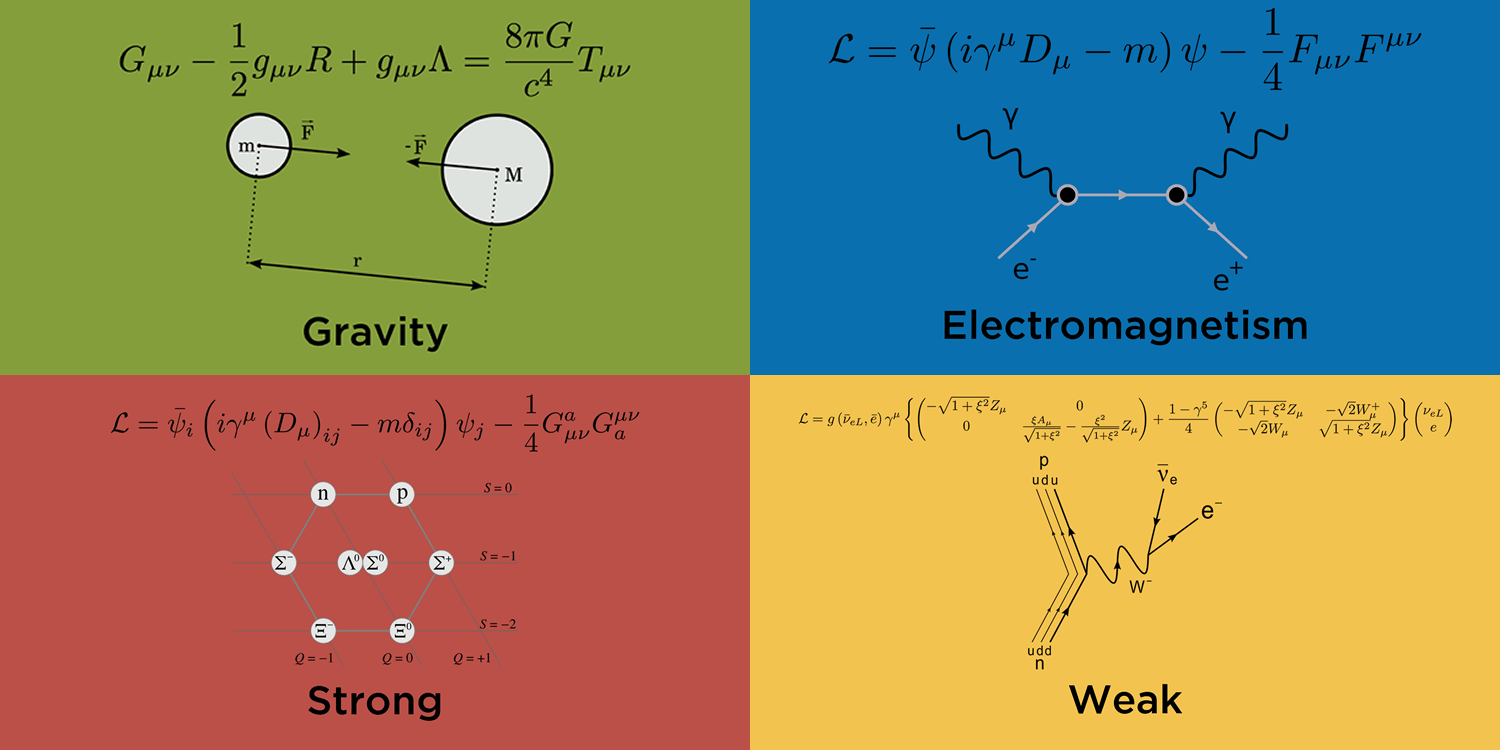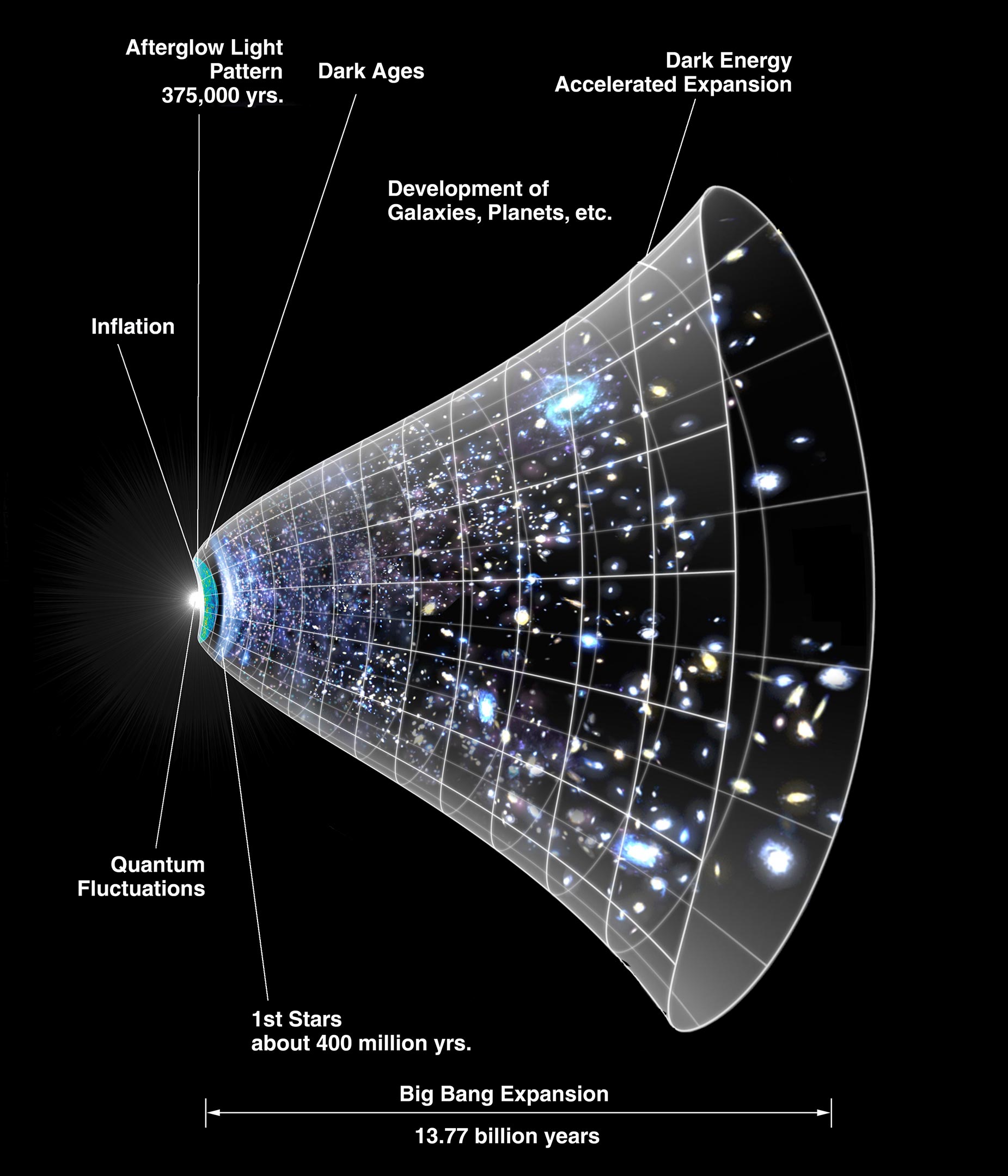Current Theoretical Understanding
The Four Forces
All interactions in the Universe are believed to be governed by four fundamental forces: gravity (the attraction between two objects that have mass or energy), the weak force (responsible for particle decay), the strong force (holds quarks, building blocks of protons and neutrons, together) and the electromanetic force (acts between charged particles, like negatively charged electrons and positively charged protons). These forces are believed to be given rise by exchanges of fundamental particles, known as "force carriers", which are themselves quanta of energy in a particular kind of field. For the electromagnetic force it's photons, strong force - gluons, weak force - W and Z bosons. Graviton is the hypothetical force carrier of gravity, but no complete quantum field theory of gravitons has been produced.

Relativity
In early 20th century, classical Newtonian mechanics were discarded in favour of Einstein's theory of relativity. He determined that the laws of physics are the same for all non-accelerating observers, and that the speed of light in a vacuum was independent of the motion of all observers. This was the theory of special relativity. It introduced a new framework for all of physics and proposed new concepts of space and time. In 1915, Einstein proposed his theory of general relativity, where he determined that massive objects cause a distortion in space-time, which is felt as gravity.
Quantum
Quantum mechanics arose gradually from theories to explain observations which could not be reconciled with classical physics, such as Max Planck's solution in 1900 to the black-body radiation problem, and the correspondence between energy and frequency in Albert Einstein's 1905 paper which explained the photoelectric effect, and light was discovered to be quantized. The features of the theory include wave-particle dualiity, wave functions probability amplitudes, quantum entanglement and many many more. It has not yet been reconciled with Einstein's relativity, even though both theories are experimentally verified, and many physicists are looking for a grand unified theory.






